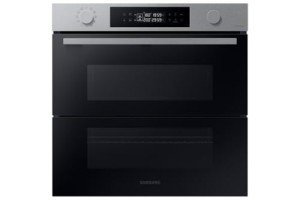Understanding Built-in Electric Ovens: A Comprehensive Guide
In modern-day kitchen areas, built-in electric ovens have actually ended up being a basic feature, offering convenience, effectiveness, and a sophisticated integration into kitchen style. This article intends to inform property owners and cooking enthusiasts about the benefits of built-in electric ovens, key factors to consider when picking one, and upkeep tips to guarantee lasting functionality.
What is a Built-in Electric Oven?
A built-in electric oven is developed to be installed within cabinets or walls, seamlessly mixing into the kitchen's architecture. Unlike standalone ovens, these designs conserve flooring area and can be located at eye level, helping with easy gain access to and monitoring while cooking.
Benefits of Built-in Electric Ovens
- Space Efficiency: These ovens use vertical area, making them perfect for smaller kitchens or those seeking to maximize counter area.
- Visual Appeal: Built-in ovens offer a tidy and modern-day look that enhances the kitchen's general style.
- Ergonomics: They are set up at comfortable heights, minimizing the stress on the back and knees, specifically when packing or dumping meals.
- Advanced Features: Many built-in electric ovens featured modern features like wise controls, convection cooking, and self-cleaning choices, which can make cooking simpler and more effective.
- Improved Functionality: Models often consist of additional features such as numerous cooking modes, timers, and temperature level probes.
Key Considerations When Choosing a Built-in Electric Oven
When selecting a built-in electric oven, numerous factors ought to be taken into consideration to guarantee it satisfies your cooking needs and fits within your kitchen layout.
Size and Capacity
Built-in electric ovens usually are available in numerous sizes. It's important to measure the allocated area to ensure a correct fit. Here are common sizes:
- Single Oven: 24 to 30 inches large, appropriate for most cooking jobs.
- Double Oven: Two separate compartments, enabling you to cook numerous dishes at different temperature levels.
- Wall Ovens: Available in plus sizes, suited for substantial cooking experiences.
Features
Choosing features that align with your cooking habits is crucial. Think about the following options:
- Convection Cooking: Distributes heat evenly for consistent outcomes.
- Smart Technology: Enables push-button control and pre-heating via smart device apps.
- Self-Cleaning: Simplifies upkeep and cleansing procedures.
- Steam Cooking: Adds moisture to dishes for better cooking results.
Installation Requirements
Built-in electric ovens need adequate electrical circuitry and ventilation choices. It's advisable to talk to experts throughout the setup stage to satisfy electrical codes and make sure security.
Rate Range
The expense of built-in electric ovens can differ considerably from budget choices (₤ 600 - ₤ 1,200) to high-end designs (₤ 2,000 and above). Consider Ovens And Hobs and cooking frequency when selecting.
| Price Range | Features | Best For |
|---|---|---|
| ₤ 600 - ₤ 1,200 | Fundamental functions, manual controls | Casual cooks |
| ₤ 1,200 - ₤ 2,000 | Convection, wise technology | Serious home cooks |
| Above ₤ 2,000 | Premium materials, advanced features | Professional chefs or gourmet cooking lovers |
Upkeep Tips for Built-in Electric Ovens
Making sure that an electric oven runs effectively includes regular maintenance. Here are some practical suggestions:
- Regular Cleaning: Wipe down the door and inside the oven after each use to prevent grease buildup.
- Self-Cleaning Cycle: Utilize the self-cleaning function occasionally (if offered). Follow the manufacturer's instructions for optimal effectiveness.
- Examine Seals and Gaskets: Inspect the door seals for wear and tear to maintain cooking efficiency.
- Calibrate Temperature: Regularly check and calibrate the oven's temperature level for accuracy cooking.
- Expert Servicing: Schedule yearly upkeep consult qualified professionals, especially for advanced designs with many electronic parts.
Often Asked Questions (FAQs)
1. Are built-in electric ovens more effective than standard ovens?
Yes, built-in electric ovens typically have much better insulation and functions like convection cooking that can prepare food faster and evenly, conserving energy.
2. Can I set up a built-in electric oven myself?
While some helpful people might choose to try a DIY setup, it is suggested to hire a professional to guarantee safe and compliant installation.
3. How much power does a built-in electric oven usage?
Generally, built-in electric ovens consume in between 2,400 to 5,000 watts, depending upon the model and features. Always refer to the producer's requirements for accurate figures.
4. Do built-in electric ovens need unique kitchen cabinetry?
Yes, built-in electric ovens need custom kitchen cabinetry or wall enclaves that support their weight and allow for proper ventilation. Guarantee that the cabinets adheres to installation standards detailed by the maker.
Built-in electric ovens are an important addition to any modern-day kitchen, using an array of functions that make cooking more hassle-free and pleasurable. By comprehending the advantages, selection requirements, and maintenance requirements related to these ovens, customers can make educated choices that line up with their cooking needs and lifestyle preferences.

